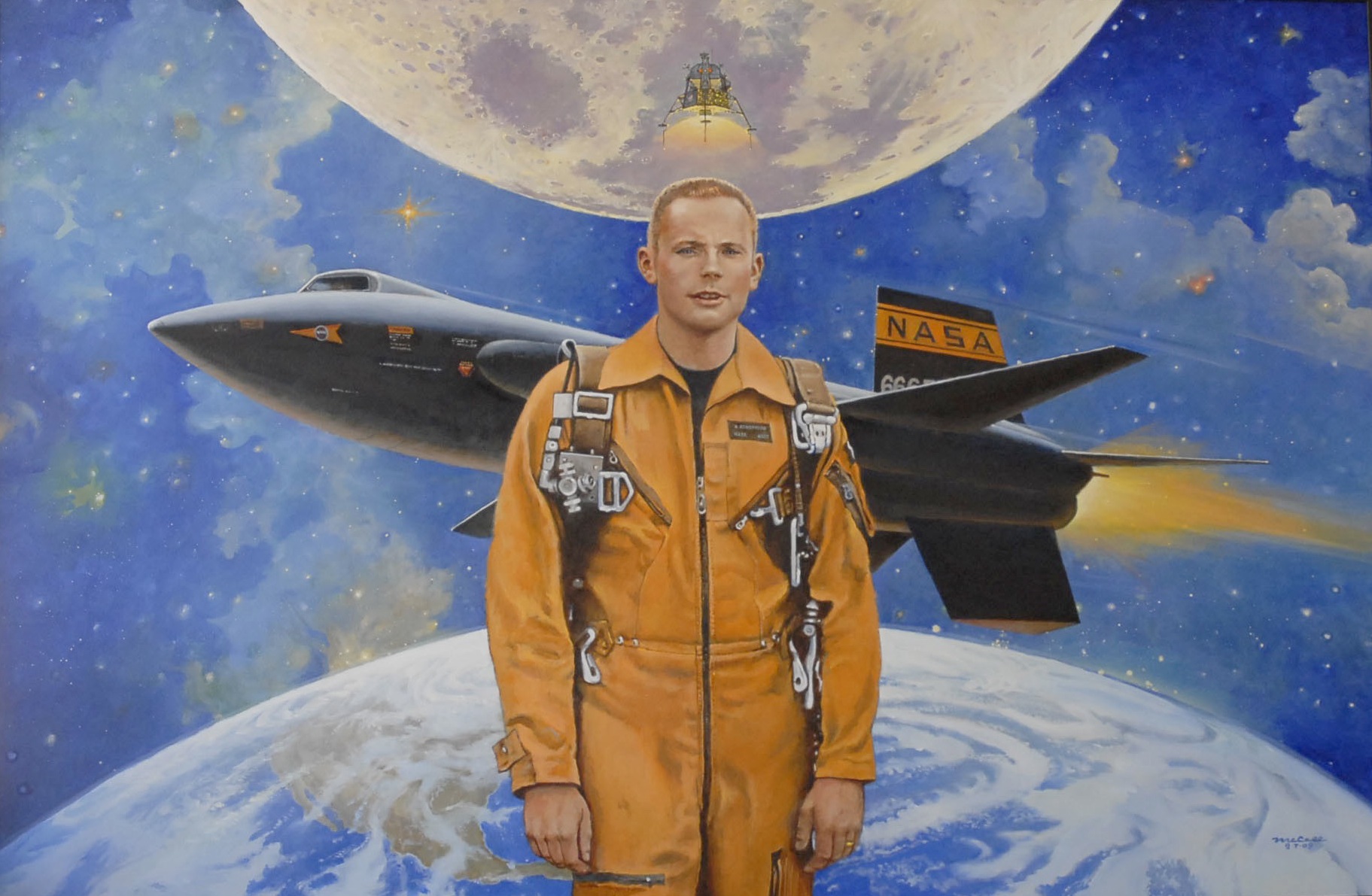
New year, new name: NASA’s Dryden Flight Research Center, located at Edwards Air Force Base in California, is now the Armstrong Flight Research Center. The center’s renaming was completed Saturday, March 1. While the memory of Neil A. Armstrong, former naval aviator turned test pilot and astronaut, is kept alive with this honor, Hugh Dryden—former NASA deputy administrator and the center’s previous namesake—will continue to be remembered, as the center’s Western Aeronautical Test Range was renamed the Dryden Aeronautical Test Range.
The genesis for the renaming of the facility was begun last year by Rep. Kevin McCarthy, from California’s 22nd District. While the resolution to rename the center was passed by the U.S. House of Representatives in early 2013, the U.S. Senate made its vote early this year. President Barack Obama signed the bill, HR 667, into law on Jan. 16.
Before Armstrong became a NASA astronaut, he was a research pilot who worked at NACA’s High Speed Flight Station, which was renamed the Dryden Flight Research Center in 1976. During his career in that discipline, he flew 48 different aircraft, including the F-100A, F-100C, F-101, F-104, X-1B, X-5, F-105, F-106, B-47, KC-135, and Paresev. He also worked on the Dyna-Soar space plane program before its cancellation. He also made seven flights in the X-15 rocket plane. When he left the center to become an astronaut candidate in September 1962, he had flown over 2,400 hours. In the X-15, he had seen altitudes in excess of 200,000 feet at speeds over Mach 5.
Of course, Armstrong’s career as a NASA astronaut would only add to his legend. In 1966, he was the command pilot of Gemini 8, paired with pilot David R. Scott. The crew accomplished the first rendezvous and docking with a target vehicle, but narrowly escaped disaster when a stuck thruster sent the Gemini spacecraft into a dangerous, high-speed spin. Armstrong’s quick thinking (firing the Reentry Control System, or RCS, thrusters) saved the day (and both astronauts).

In 1969 (after again narrowly escaping death during a 1968 LLTV lunar module test vehicle crash), he commanded Apollo 11, the world’s first manned Moon-landing mission. After steering the Eagle clear of boulder fields, he set the LEM on the Moon’s Sea of Tranquility with seconds of fuel to spare. If these previous accomplishments hadn’t been impressive enough, he became the world’s first moonwalker shortly after settling the LEM upon the Moon.
NASA Administrator and former astronaut Charlie Bolden paid tribute to Armstrong—and Dryden—in his comments concerning the renaming.
“I cannot think of a more appropriate way to honor these two leaders who broadened our understanding of aeronautics and space exploration. Both Dryden and Armstrong are pioneers whose contributions to NASA and our nation still resonate today. Armstrong was the first person to walk on the Moon. Dryden’s expertise at the National Advisory Committee for Aeronautics and then at NASA established America’s leadership in aerospace, and his vision paved the way for Armstrong to take those first steps,” he enthused.
This isn’t the first time an astronaut’s achievements have been honored with a NASA center renaming. The Lewis Research Center, located in Cleveland, was re-designated the Glenn Research Center in 1999 honoring the milestones of Mercury and shuttle astronaut Sen. John H. Glenn. According to NASA, a public ceremony celebrating the renaming will take place at the center this spring.
Special thanks to artist Tim Gagnon for the information about the Robert McCall painting pictured above.
Want to keep up-to-date with all things space? Be sure to “Like” AmericaSpace on Facebook and follow us on Twitter: @AmericaSpace




Hopefully, the first of many honors and recognition for Armstrong. Can we get a statue or monument to the Apollo 11 crew in Washington, D.C.? Long overdue!
Why would they name it after a doped up Bicyclist??
i kid i kid.